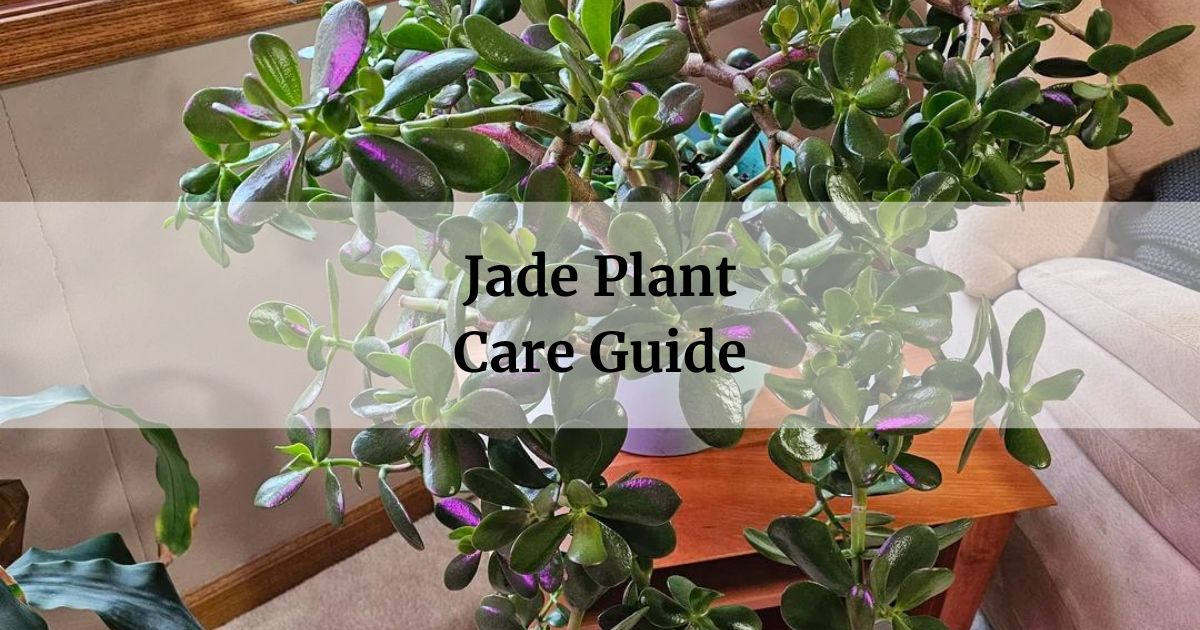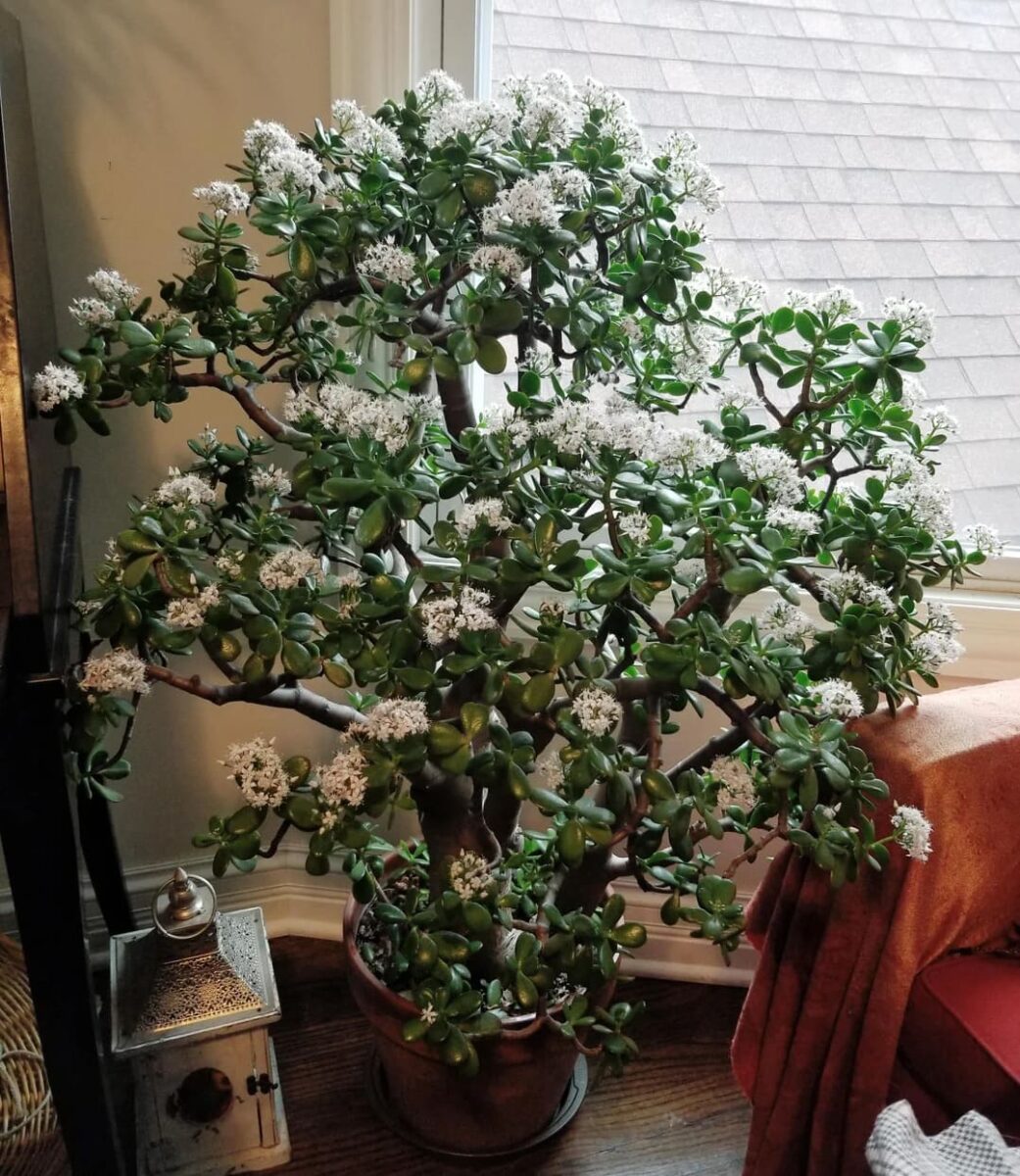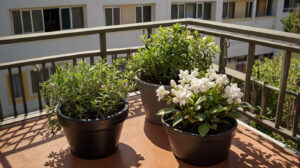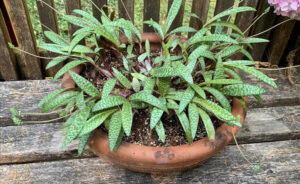
The Jade Plant, also known as the money plant or lucky plant, is one of the hardiest and easiest plants to care for. With its thick stems and glossy green leaves, the Jade Plant is one of my favorites for beginners.
- Pros
- Extremely low maintenance
- Thrives with neglect
- Easy to propagate from stems or leaves
- Leaves have a beautiful waxy shine
- Cons
- Can get leggy without proper pruning and training
- Sensitive to overwatering
- Toxic to pets so keeps animals from nibbling
In this article
- 1 Appearance of the Jade Plant
- 2 Toxicity Level of Jade Plant
- 3 Light Requirements for Jade Plant
- 4 Watering the Jade Plant
- 5 Fertilizing the Jade Plant
- 6 Potting the Jade Plant
- 7 Propagation of Jade Plant
- 8 Growth and Development of the Jade Plant
- 9 Managing Pests and Diseases
- 10 Complimentary Plants with your Jade Plant
Appearance of the Jade Plant

The Jade Plant has thick succulent stems that are dark green and waxy. New growth emerges as tight rosettes that slowly expand into paddle-shaped leaves. Leaves are thick and fleshy, ranging from 1-4 inches long. When mature, the plant develops a treelike shape.
- Leaf Shape: Thick and paddle-shaped
- Leaf Size: 1-4 inches
- Flowers: Small whitish-pink starbursts
- Hardiness: Very hardy, almost impossible to kill
- Water Needs: Very low. Loves drying out between waterings
- Sunlight: Bright indirect or low light
Great for People who:
Want a low maintenance houseplant that thrives with neglect. The Jade Plant is so resilient that you can forget to water it for weeks and it will still be fine.
Great for these Spaces:
The Jade Plant adapts well to a variety of light conditions so it’s perfect for offices, kitchens or bedrooms with lower light. Its sculptural nature also makes it a great focal plant.
Caring for Jade Plant
The Jade Plant is one of the easiest plants to care for. All it needs is very well-draining soil, bright indirect sunlight, and to be left alone. Water only when the soil is completely dry. It can go weeks without water during its dormancy in winter.
Toxicity Level of Jade Plant

All parts of the Jade Plant are considered mildly toxic to pets and humans if ingested. While uncommon, chewing or swallowing the leaves may cause upset stomach or vomiting. Keep it out of reach of children and pets just to be safe. The good news is its leaves are so thick that animals rarely bother to chew them.
RELATED: Worst for Pets: Toxic Houseplants to Keep Away from Cats and Dogs
Light Requirements for Jade Plant
The Jade Plant thrives in bright indirect sunlight but can tolerate very low light conditions as well. It may become leggy without enough sunlight.
| ight Conditions | Effect on Jade Plant |
|---|---|
| Bright Indirect Light | Thick stems and compact growth. Leaves remain dark green |
| Low Light | Slower growth. May become leggy or lose lower leaves |
| Direct Sunlight | Can burn leaves easily. Filter sunlight or provide morning/afternoon light |
It also does well under grow lights for 6-8 hours per day. Increase light in spring and summer for healthy growth.
Watering the Jade Plant
Water the Jade Plant when the top 1-2 inches of soil is completely dry. This can be every 2-4 weeks during spring and summer. Reduce watering further in fall and winter, when the plant is semi-dormant – once a month or less.
Water thoroughly when you do water, allowing the excess to drain from the bottom of the pot. Avoid getting water on the leaves. The secret is neglect – underwater rather than overwater.
Fertilizing the Jade Plant

Jack’s Classic All Purpose 20-20-20 Water Soluble Plant Food (1.5lbs)
Fertilize every 2-3 months during spring and summer with a balanced, water soluble houseplant fertilizer diluted to 1⁄2 the recommended strength.
| Month | Recommended Dosage |
|---|---|
| Spring (March-May) | 1/2 strength every 2-3 weeks |
| Summer (June-August) | 1/2 strength every 2-3 weeks |
| Fall (September-November) | 1/2 strength monthly |
| Winter (December-February) | Avoid fertilizing |
Potting the Jade Plant
Repot the Jade Plant every 2-3 years, in early spring, using a well-draining potting mix. Go up only 1-2 inch pot size to avoid overwatering. Remove lower leaves that sit in the soil and continue pruning leggy stems to maintain its shape.
Propagation of Jade Plant
Propagating Jade Plants from stem or leaf cuttings is very easy. In spring or summer, take stem cuttings 4-6 inches long and set them in a sunny spot to root. You can also break off an intact leaf and lay it on top of cactus soil to root. It will develop into a new plantlet. In a few weeks, you’ll start to see roots developing.
Growth and Development of the Jade Plant

With sufficient sun exposure and well-draining soil, Jade Plants grow very slowly throughout the warmer months. They grow best at temperatures between 65-80°F. In fall and winter reduce watering and fertilizing for dormancy. This leads to more compact growth. Use pruning to shape the plant and remove leggy stems. Wipe down leaves monthly with a damp cloth to remove dust build up.
Managing Pests and Diseases
Jade Plants are generally very hardy and pest/disease resistant. Check new plants for pests like spider mites or mealybugs, isolating any infected plants. Clean up fallen leaves and stems which can harbor pests or diseases. You’re most likely to have problems if overwatering the plant.
Complimentary Plants with your Jade Plant
Frequently asked questions
How do I get my Jade Plant to be bushier?
Prune leggy stems back to where there are leaves or nodes. This encourages fuller branching.
Can I grow my Jade Plant outdoors in the summer?
Yes, you can acclimate it to direct sunlight outdoors gradually in spring. Bring it back indoors before night fall to avoid frost.
My Jade Plant’s leaves are turning yellow, what’s wrong?
Yellow leaves likely mean it’s being overwatered. Check the soil and wait for it to fully dry out before watering again.
With its easy-care requirements and natural sculptural form, the Jade Plant is a wonderful addition for any home or office. Enjoy this subtle beauty for years with just the right balance of sun, water and neglect!
RELATED: Worst for Beginners: 7 Houseplants to AVOID as a New Gardener
Happy gardening!







